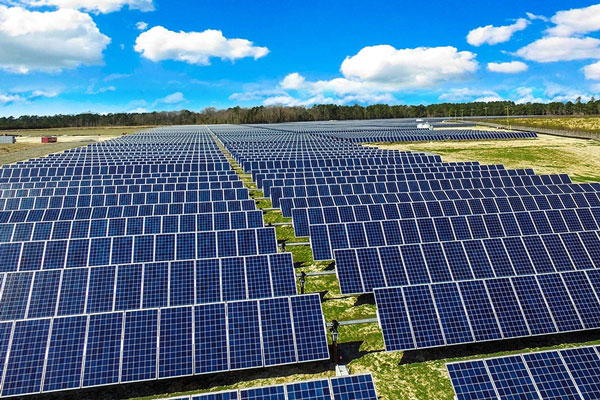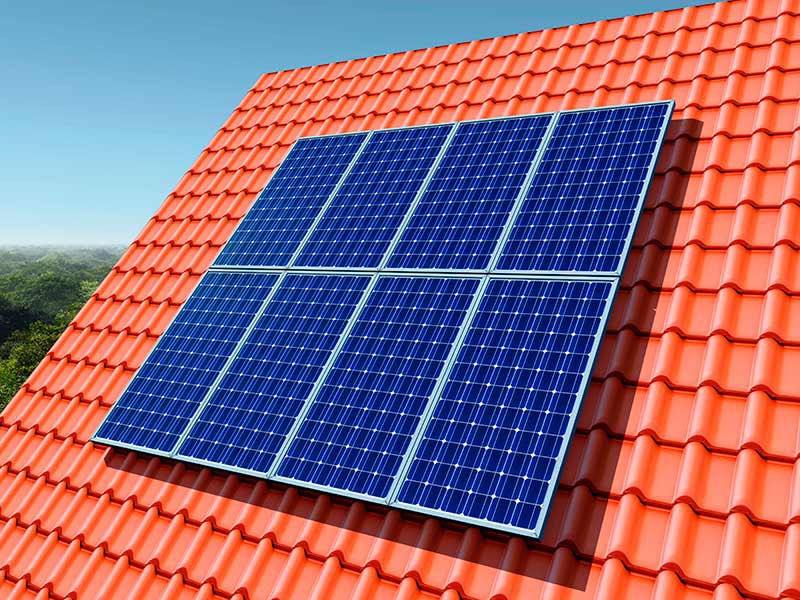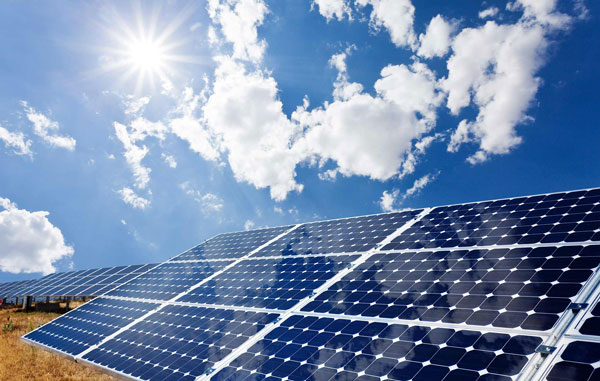Monitor your solar panels for reduced output, visible damage, increased bills, inverter alerts, physical impairments, shading, and signs of corrosion to ensure optimal function.
Reduced Energy Output
What Can Be Done to Solve Low Energy Production If there are problems with utility scale solar projects you may have reduced energy output, the first thing that people need to keep an eye on which is likely for a problem. On average, a solar panel should lose 0.5%-3% per year. But more severe drops in energy production can be a sign of something more troubling than just routine aging.

Signs of Decreased Performance
Readings from the Monitoring System: Keep an eye on changes to energy that is being produced from your system through its inverter. As an example, if a 500 kWh system suddenly drops to 450 kWh and we know there hasn't been some drastic change in the environment, there would be concern.
Major Reasons for Low Output
- Panel Blockage: Dirt, Debris Or Snow covering up the panels will call for the efficacy of the solar panels. More than 25% less output from covered panels The study reports that panels shielded only partly by leaves or earth may lose up to 25%.
- Shading – New construction or trees growth can shade panels, reducing their power output drastically where it wasn't a problem when the panel was first installed.
- Weak Components: Some pieces of your solar array, like inverters or connectors, can underperform in the future causing an energy production lowering. Most times, the parts of these two units tend to wear out or show signs of trouble before collapsing.
Deal with the Reduced Output
- Basic Cleaning: Sometimes a quick removal of any debris or dirt on the surface of the Panels may be sufficient to restore the output capacities.
- System Diagnostics: Carry out complete Diagnostic check including failure of inverter or any connectivity problems within solar array.
- The Professional Assessment: If no immediate visual or analytical clues arise, a professional should be contacted to evaluate the system more thoroughly.
Keeping performance at its best
- Preventative Maintenance: Regular schedules of maintenance can prevent most scenarios that lead to falls from unexpected outputs.
- Upgrade Components - updating to newer, higher-quality components can also improve the energy output of older solar systems.
Physical Damage
Physical Damage Physical damage to the solar panels really degrades their performance andableness These damages are normally associated with environmental risk such as hail, falling objects or knockout the strong windstorms. As with any well-used piece of equipment, detecting these at an early stage and dealing with this straight away will prolong the life expectation and ensure that the solar installation remains as productive as possible.
Physical Damage Typical Causes
- Hail - especially hail of a size that is easy to come by in areas of the country where there are solar panels - will beat up and potentially punch holes into solar panels. A storm with large hail stones greater than 1 inch in diameter is reported to reduce up to 80% of a solar panel's output efficiency.
- Branches, rocks, other debris - High winds can throw anything in the trajectory of the system forcing cracked glass and completely broken panels.
- Unnatural Contact: Scratches or pressure points are minimal weaknesses in the panel that are caused by improper use during installation or maintenance.
Detecting Physical Damage
- Visually Inspect: This is the biggest one of all, you need to do regular checks visually. Check for Cracks, Chips in the Glass or signs of delamination where the protective layers on the panel separate.
- Check Power Output - Major damage will cause a significant drop in power output, this is why I always keep tabs on how my battery pack health is effecting performance. These drops can be detected by monitoring the system outputs through the inverter.
The Consequences of Neglecting and Overlooking The Damage
- Moisture Penetration: Any cracks or broken seals in the panel will let moisture in which can cause internal corrosion and short circuits.
- Poor Power Generation: Small defects in any part of a panel can lead to decreased power generation by a panel and this in turn affects the energy yield of whole system.
Maintenance and Prevention
- Regular Inspections: Set up a plan of keeping an eye on your roof after every harsh weather conditions that could potentially damage it.
- Protection: If you live in a place that is easily hit by severe weather, think about adding protective walls or using hail-resistant solar panels.
Immediate Actions Post-Damage
- Professional Evaluation: If you see damage, get a professional out to assess how far it goes and possible options for repair.
- Repair or Replace : Depending upon the professional's assessment, you may have to repair these broken parts or replace it with a new panel in order for the system to work perfectly..
Steps to Take to Plan for Long-Term Care
- Improved Methods of Installation - Install the panels with adequate structure and care so that they are able to withstand possible damage due to external force
- Solar Panel Insurance: Depending on where you live and whether or not the prevalent weather in your country is extreme, it can make sense to invest in solar panel insurance that covers damage to the panels from things like environmental forces.
Inverter Alarms
What to do when a your inverter starts alarm sounding Inverter alarms are important canaries within the solar power system. These alarms are programmed to notify home owners and maintenance teams on voltage fluctuations, overheating or any communication failure between the inverter and solar panels.Causes Inverter Alarms
- Anomalies in Voltage: Most inverters will beep to alert you if there is an issue with the voltage input or output. The cause can be solar panel problems, such as shading or degradation, or grid side issues.
- Temperature Alerts: When an inverter works outside its normal temperatures, which can be from environmental heat or failures of the cooling system, it will alarm. Excessive heating can affect the durability and traceability of an inverter.
- Communication Failures: With the latest solar inverters of today, they communicate with other system components and monitoring. If this communication fails, it will prompt an alert. You could be facing a problem with software, hardware or even because of interference from your surroundings.
Trouble Shoot Inverter Alarms
- Visual Inspection Before you start with your vincity, immediately check your system by doing a quick visual inspection to be sure that there are no visible problems such as unplugged wires or any covered given panels.
- Search the Manual: Refer to the manual or manufacturer's website for specific alarm codes that can diagnose the issue correctly on each inverter.
- Temperature Control: Keeping the inverter out of direct sunlight and keeping it cool enough can help avoid triggering overheating alarms.
- Firmware hisa updates- many communication and operational issues are avoided by keeping the firmware in your inverter updated.
Engage Professional Help
Call Technical SupportIf opening and closing the fuse doesnt resolve your alarm, you should call technical support or a certified solar technician. This will allow them to delve deeper into diagnostics and potentially reset or replace any components that are faulty.Unusual Sounds
Identifying Sounds Coming From Solar PanelsAttitude stability control with monitorSolar panels are for the most part noiseless, yet can some of the time produce sound from different segments that are connected to it like inverters as well as power boxes when something is not right. The earlier you are able to identify these strange sounding alarms, such as buzzing, humming, or clicking the better the chances of avoiding even bigger problems later.
Common Sources of Noise
- Soft Buzzing from an Inverter: It is normal for an inverter to make a soft buzzing sound while in use, especially under load. A buzzing can be anything from a noisy malfunction to electrical arcing or a bad capacitor.
- Cracking Sounds - thermal expansion or contraction can create small crepitation noises in the panels themselves or in the mounting system. These are normal, however, a particularly loud crack might indicate some structural issues.
- Relays or Contractors: If these are the source, they will obviously be creating a clicking noise when the motor turns them on and off. However, constant or very loud clicking may suggest electrical problems.
How to diagnose and fix odd sounds
- Visual and Audible Inspection: If you discover strange noises or sounds, then take a swift look at your solar panel array along with the parts as inverter, junction boxes etc. closely to check all of them for any visual damage or overheating if visible.
- Manuals Consultation: As with the previous point, check the user manuals related to your solar system parts and make sure that this sound is something normal or a warning of a problem to come.
- Check System Performance: Watch for output of the system. If there is a drop in performance whilst hearing the sounds of creaking brakes, this could be a sign of component wear.
- Call a Professional: Usually, if you can't identify the source of the sound or the manuals suggest that it could be a severe problem, you should call a pro. Professional technicians can use some specific maintenance tools to find out what is wrong with your device.
Routine Maintenance Checks
- Regular Maintenance Inspections: Seen as a way to catch what is wrong before it starts talking, general maintenance keep a system quite and efficient.
- Adjusting Components: In some cases just adjusting the mounting or tightening loose components will get rid of strange noises.
Increased Utility Bills
What an Expensive Utility Bill Probably Indicates Sometimes when your utility bills start rising in a suspicious way, it is the result of an inefficiency with your solar panel system. It means the system might be producing less power but it is simply forced to be treated as if you are using a larger share of it than necessary and charging that excessive power more.Reasons for an Uptick in Your Utility Bills
- Reduced Output Of Solar Panels: If the solar panels generate less energy because of examples like shading, soot or digital failures increase grid dependency. This means if, for example, a system produces 20% less due to partial shading you will use 20% more (from the grid) and it will cost exactly the same on your electricity bill.
- Intermittency: Solar production may vary with the seasons. However, a noticeable deviation from expected seasonal patterns should flag something is wrong.
nvestigate High Utility Bills
- ENERGY USE ANALYSIS: Compare energy bills for the same period in previous years to notice an anomaly or detect faulty equipment; That breakdown can help at least identify whether the problem resides in increased consumption or decreased production.
- Monitor the System: Review the system monitoring tool to make sure your solar system is generating power consistent with what it has produced in the past. If consumption is static or decreasing but the output of solar falls every year, then there's a problem.
- Inspect for Obstructions or Damage: Check the solar panels visually to ensure there are no obstructions like if trees have become taller, and debris has built up that could be blocking sunlight.
Engaging a Solar Specialist
If the step does not find the cause, it may be required that a professional audit of the system is performed. A professional solar expert can conduct a comprehensive inspection to uncover those hidden malfunction like Inverter failure or faulty wires which are not easy to be observed.
Maximizing System Health
- Maintenance on regular basis - With the help of periodic cleaning and maintenance you can avoid almost all the factors that lead to limited functionality and result in high utility bills
- Keep Up with Repairs: A quick repair will assure the solar is in working order, and your utility bills are capped.
Shading Issues
Shading as Performance Inhibitor If they shade solar panels -whether partially or wholly- substantially will limit solar panels efficiency, reducing the total quantity of energy they provide. According to a study conducted by the National Renewable Energy Laboratory, it was shown that shading just 10% of a single panel in an array can cut the entire system output by up to 50%.
Common Sources of Shading
- Natural Overgrowth: Trees branches grow overtime and can start shading on your panels during portion of the day.
- New Buildings: New constructions nearby can introduce shading that did not exist when the solar panels were set up.
- Accumulated Debris: Leaves, bird droppings, and other debris may create spot shading and diminish the output of your solar panels.
Fixing Shading Issues
- Site Survey: Review the install site every quarter to identify potential new shading sources.
- Maintain Your Yard: Regularly trimming the trees and bushes around your solar panels ensures that there will be no shadows affecting the output of your system.
- Moving the panels: Shading is caused by a permanent object, you might need to think about relocating your panels to a better place where it gets more sun.
Monitor and Adjust for the Best Sunlight
- Sun Trackers: Sun trackers help panels to orient themselves toward the sun through the day and alleviate unwanted shadowing effects.
- Periodic Cleaning : Dirty panels also slow down the production speed of electricity and put police at a risk to arise, as you can see they are very messier than meanwhile, Advanced Window Solutions make this bothersome as easy due to lessening and security the council.
Comprehensive Issues Consultations
Solar Technician Phoenix: For more major shading problems, especially structure shading from a new build, a solar tech may recommend solutions like relocating the variety or transferring to greater color forgiving panel innovations.



